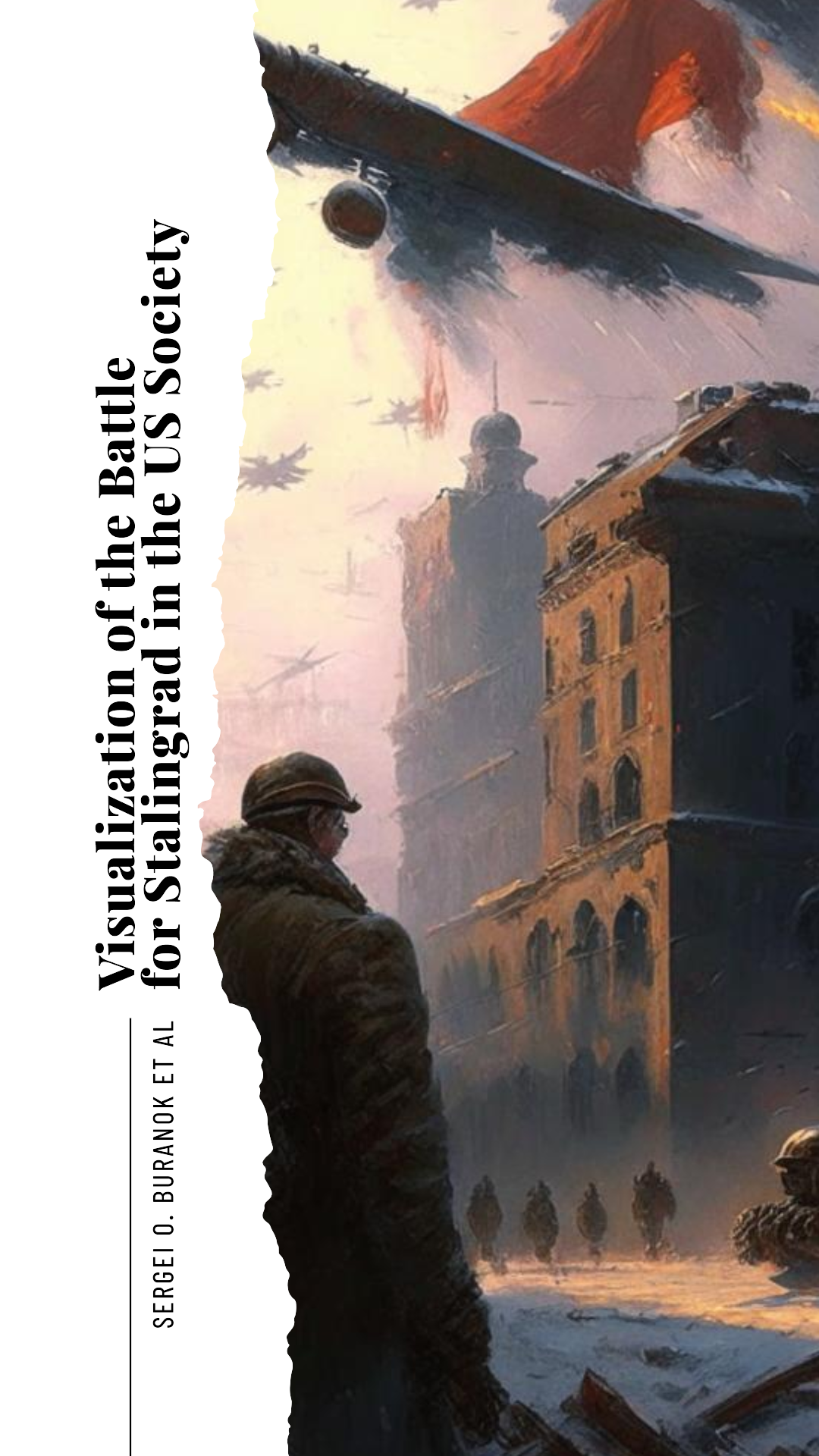Abstract
The article analyzes the process of the formation of the image of Stalingrad in 1942-1943. The purpose of the study is to examine, based on American cartoons, documentary films, and periodicals, the main points in the evolution of the attitude of American society towards Stalingrad, as well as to demonstrate the complexities and contradictions in understanding the features of the USSR. The study of cartoons will help determine the nature of the interaction between textual and visual images in the US media during the discussion of the outcomes of Stalingrad. The analysis results in highlighting a typology of visual images of Stalingrad.
References
Aldgate, T. (1991). Mr Capra Goes to War: Frank Capra, the British Army Film Unit, and Anglo-American travails in the production of ‘Tunisian Victory’. Historical Journal of Film, Radio and Television, 11(1), 21–39. https://doi.org/10.1080/01439689100260021
Bellamy, C. (2007). Absolute War: Soviet Russia in the Second World War. Ulan Press.
Belov, D. A. (2011). Stalingrad in the assessment of the public of Great Britain and the USA 1942-1945. AsGard. (In Russian).
Boston Daily Globe. (1941).
Browne, N. (1998). Refiguring American Film Genres: Theory and History. University of California Press.
Deseret News. (1942).
Doherty, T. P. (1993). Projections of War: Hollywood, American Culture, and World War II. Columbia University Press.
Eberwein, R. (2004). The War Films. Little, Brown and Company.
Editorial Cartoons of J.N. “Ding” Darling. (n.d.). University of Iowa. Libraries. Special Collections Dept. MSC0170. 1942.
Engerman, D. C. (2003). Modernization from the Other Shore. American Intellectuals and the Romance of Russian Development. Cambridge, Massachusetts and London, England. https://doi.org/10.4159/9780674036529
Harris, M. (2014). Five Came Back: A Story of Hollywood and the Second World War. Canongate Books.
Hart, C., Hodgson, G., & Jones, S. G. (2014). World War II & the media. A collection of original essays. UP press.
Horton, T. A., & Clausen, K. (2015). Extending the History Curriculum: Exploring World War II Victors, Vanquished, and Occupied Using European Film. The History Teacher, 48(2), 321–338.
Kane, K. (1982). Visions of War: Hollywood Combat Films of World War II. UMI Research Press.
King, C. S. (2019). Virtual Staff Rides: Their Benefits and Methodology. Army History, 110, 36–43.
Koppes, C., & Black, G. (1990). Hollywood Goes to War: How Politics, Profits and Propaganda Shaped World War II Movies. UCP.
Lewiston Morning Tribune. (1931).
McCallum, C. E. (2015). Scorched by the Fire of War: Masculinity, War Wounds and Disability in Soviet Visual Culture, 1941–65. The Slavonic and East European Review, 93(2), 251. https://doi.org/10.5699/slaveasteurorev2.93.2.0251
Myagkov, M.Yu. (2003). Operation “Mars” and its significance during the Battle of Stalingrad. In Battle of Stalingrad: history and significance. AST. (In Russian).
New York Times. (1931).
Palm Beach Post. (1942).
Pittsburgh Press. (1942).
Popov, V.N. (2007). Battle of Stalingrad: according to the latest research. Novaja i Novejshaja istorija, 2, 3–32. (In Russian).
Portsmouth Times. (1941).
Sheboygan Press. (1941).
Small, M. (1996). Democracy and Diplomacy: The Impact of Domestic Politics in U.S. Foreign Policy, 1789‑1994. JHU Press.
St. Petersburg Times. (1942).
The Great Patriotic War of 1941-1945: in 12 volumes (Vol. 1). (2011). Kuchkovo pole. (In Russian).
Tuscaloosa News. (1941).
Youngstown Vindicator. (1942).
Zhuravleva, V.I. (2017). Myths about Russia in American political cartoons: history and modernity. In The USSR and the USA in the 20th century: the perception of the “other” (pp. 187–213). Politicheskaia entsiklopediia. (In Russian).

This work is licensed under a Creative Commons Attribution 4.0 International License.

